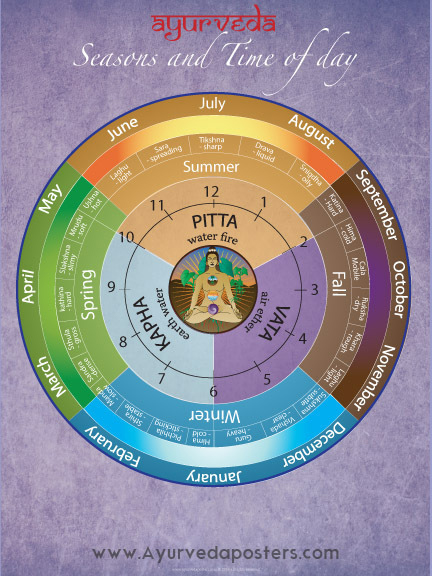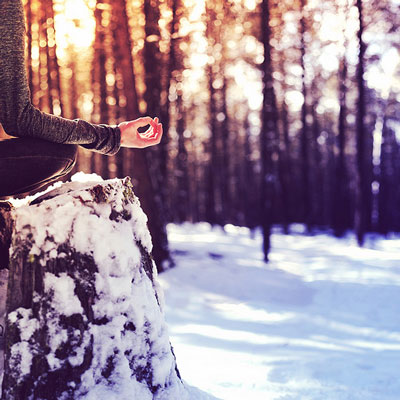- Home
- About Us
About Himalaya
Spain
India
Ireland
- Yoga
-
-
Yoga Teacher Training
-
Yoga Teacher Development
-
Retreats and Holidays
-
-
- Online
-
-
Online Yoga Academy
Our Online Yoga Academy brings together all of our Online Yoga Services. From Teacher Training, to online short courses, or yoga class memberships, you can expand your knowledge and deepen your practice wherever and whenever suits you.
Find out more
-
-
-
-
-
- Resources
- Contact Us
- Home
- About Us
About Himalaya
Spain
India
Ireland
- Yoga
-
-
Yoga Teacher Training
-
Yoga Teacher Development
-
Retreats and Holidays
-
-
- Online
-
-
Online Yoga Academy
Our Online Yoga Academy brings together all of our Online Yoga Services. From Teacher Training, to online short courses, or yoga class memberships, you can expand your knowledge and deepen your practice wherever and whenever suits you.
Find out more
-
-
-
-
-
- Resources
- Contact Us

Viriam Kaur
Yoga Philosophy Teacher
Yoga and Ayurveda for Winter
Seasons change...and what can those changes teach us? An invitation to listen to our bodies…and to respect our own rhythms.
Seasons change
To be honest, most of us at Himalaya Yoga Valley usually travel from summer to summer with a few transitional spring or autumn days to mark a change in location and latitude. We leave the heavy heat of pre-monsoon India in May landing into the hopeful emergence of Spring and Summer in Europe and as people start to reach for warm layers and scarves again, we head back as the rains clear in India and the sun emerges again.
So what can the season change teach me? It is an invitation to listen to my body… and to respect my own rhythms.
Winter invites us to go inwards- introspection – interoception (mindfulness in the body) and to tap into our creative selves.
Following the dry, windy, and erratic days of Autumn, Winter is typified by a colder and damper feel.
What does winter do to our doshas?
The three doshas are mirrored in the changing of the seasons:
Kapha – element of Earth and Water is seen in Spring and Winter (water- mucus/ cold and damp).
Pitta – element of Fire is seen in the Late Spring/ Summer. (Heat)
Vata – element of Air and Space is seen in Autumn/ early Winter. (Cold, windy and dry).
Vata is exacerbated by the dry winds creating more anxiety and mood swings. The change can make us feel sensitive and jangle our nerves (and that sensitivity and nervous energy is already exacerbated in 2020). Seasonal disorders manifest mostly in the nervous system – as well as feeling anxious, you might be more sensitive to pain, headaches, migraines, and joint pain.
Naturally, we are living in challenging times only ever one news bulletin away from a slump, triggering an outburst or a sense of despondency. We might be suffering from insomnia and anxiety anyway – but the erratic nature of the weather can be unsettling creating a greater tendency in us towards instability, irritability, and anxiety.
So in order to create balance we need to embrace routine – simple rituals to calm our nervous system, soothe our minds and our changeable behaviors. We can look towards the oasis of our yoga mat and creating nourishing routines in the kitchen to help us find balance.
So in order to create balance we need to embrace routine – simple rituals to calm our nervous system, soothe our minds and our changeable behaviors. We can look towards the oasis of our yoga mat and creating nourishing routines in the kitchen to help us find balance.
In the Deep Midwinter
So let’s look more at preparing ourselves for the Kapha season in terms of nutrition and motivation.
Kpaha is the element of Water and Earth – so finding balance is important or else we have a composite of mud – a heaviness and lethargy. We want to balance the grounded stability of the Earth and the flowing nature of Water. When Kapha is in balance, you feel strong, grounded and stable, but when it is out of balance it can make us feel heavy in the body and the mind, as well as accumulating in the lungs and chest making breathing difficult. As the environment becomes colder and wetter, we tend towards Kapha behaviors – eating and sleeping a little more as well as moving a little less. So maintaining movement and momentum is key.
Winters are a time to seek comfort and solace within but because of the holidays there can also be a time of overindulgence. A little too much heavy food, exacerbated by lack of exercise, stagnant energy and a tendency to stay inside can lead to lethargy, mental fogginess and a heavy attitude. We need to seek out nourishing foods, but also get out in Nature, practice lots of pranayama and a great way of waking up a stagnant Kapha attitude is an expansive asana practice with movement, flow and deep lung-fulls of breath.
In the Kapha time of the year, there is more tendency towards coughs and colds (damp and heaviness in our lungs), stiff joints (again due to dampness in the body) and a general feeling of contraction and tightness.
In Kapha dominated Wintery season, we are trying to balance our own Dosha dominance and the energy of the season – so even if we are Vata or Pitta, we will still have the tendency towards colds and coughs (the mucus of Kapha), potentially depression because of the lack of sunlight and fresh air and joint ache because of the damp weather.
In Ayurveda, maintaining a routine is always important for all doshas.
Winter can be tough for Kapha types as it exacerbates cravings for comfort foods and sweets which exacerbate Kapha in the body – seek balance by adding astringent fruits, leafy bitter greens– and use the holy trinity of onion, garlic and ginger and spices like cumin and turmeric again will support the body at this time of year (good for digestion). Bitter and Astringent foods are good for the Kapha time of year – astringent fruits like apples and pomegranates, most legumes like chickpeas are also astringent in quality. How about an aubergine and chickpea curry or tagine – you can go for Indian or Middle Eastern flavours and spices which often draw from these astringent and bitter tastes. Another option would be a hearty aloo gobi (potaoto and cauliflower dish as again these are of the astringent taste).
If there is an accumulation of Kapha in the body in the form of mucus we should steer clear of dairy, sugars and processed foods. Raw foods are at odds with cold and damp weather, but you could add fermented foods like sauerkraut and kimchi make great side dishes at the moment as they can give both our immune systems and our digestion a boost at this time of seasonal change – but do not overdo it as they can be heavy (tamasic) on our systems.
On the Mat
Prana propels Kapha – get moving. Prana is movement. And breathe….
Pranayama techniques like ujjayi and bastrika which are heating and stimulating are perfect for the Kapha time of year.
Stimulating Kapha – Key intentions of yoga practice for Winter are keep focused and keep moving. As I am going out less and sitting around more – I am feeling the need to move, to create space and energy and so this will be more part of my routine as we move into Winter. Kapha types need to move more – needing faster-paced sequences and repetition to keep them engaged. Sun salutations and Warrior variations are great for Kapha as well as backbends which open up the chest and respiratory system (Kapha – mucus tends to collect in the chest). Salutations and backbends pump prana through our system. A sequence with a faster pace gets energy moving and if we are eating a little more – especially during the holidays – this can prevent us from feeling heavy. Asanas like navasana (boat pose) and Malasana squat are great for toning the digestive system which is important for Kapha (and probably all of us in the holiday-time of indulgence). In Autumn and Winter, it is good to practice in a warm space – feeling held – if we get cold we will contract and tense and for Vata types, this will cause nervousness and anxiety. For Kapha types, keep a strong focus.

Finding momentum
As the days get colder, I do feel a hunch in my shoulders – a little contraction and tensing to the temperature – so I am finding a need for expansive postures to counteract it and give a deeper sense of space.
Pitta types can often find the coolness of Autumn and Winter invigorating – the key intention for practice is to stay focused on your own breath and movement, not competing with others or how you ‘performed’ yesterday. A Pitta person can find reward from a dynamic practice in Winter if they keep grounded and non-competitive; they can also be nourished by a more restorative grounded practice.
For Vata people, you can explore expansive movement but keep it slow and rhythmic (rather than fast-paced) and incorporate lots of grounding asana at the end to ground Vata’s more restless, erratic energy.
See what you need from your practice as you roll out your mat – listen to your body.
Pratyahara is the fifth limb of yoga and ayurvedic and yogic scholar David Frawley refers to it as the ‘forgotten limb’ of yoga – I think we could see it at the moment as the Wintery limb of yoga. Pratyahara is about withdrawal – gathering inwards. We draw our senses away from our overly stimulated environments and sensual stimuli – fine-tuning our awareness and becoming sensitive to what is going on inside. We become more fascinated with what is going on inside – our breath, our heartbeat – and less drawn to the distractions of the outside world. It is an important stage in cultivating the space for meditation but at this time a practice that can draw us back to our own resources making us feel centered and less distracted or dissipated.
See what you need from your practice as you roll out your mat – listen to your body.
Routine and Ritual
I start my practice by lighting a candle – welcoming the light. I softly chant so as not to wake the whole house and practice alternate nostril breathing which is particularly good for emotional balance and the nervous system. I practice a short heart-based meditation and from this sense of deeper listening, I feel into the kind of yoga practice I need today. We need to be aware of our habits – even in our yoga practice. Routine is good, rituals are even better.
As the days draw in, Nature is pressing a reset – and we are invited to do the same.
We need to be aware of our habits – even in our yoga practice. Routine is good, rituals are even better. As the days draw in, Nature is pressing a reset – and we are invited to do the same.
Creating Calm – Winter 2020
- Tell your friends and family to be respectful of your boundaries when it comes to the news media
- Switch off your mobile phone an hour before bed – try not to reach for it for the ‘latest’ first thing in the morning
- Practice alternate nostril breathing – inhale for 4 and exhale for 8 (a longer exhalation soothes your nervous system)
- Set an intention for your yoga practice
- Light a candle in the evening to honour the light and the dark

Want more of Viriam's teaching?
You can follow Viriam’s blog at em-bodied.org or check out online workshop schedule at Himalaya Yoga Valley Online to sign up for one of Viriam’s classes.
 Book A Call With Us
Book A Call With Us
Please wait while you are redirected to the right page...




